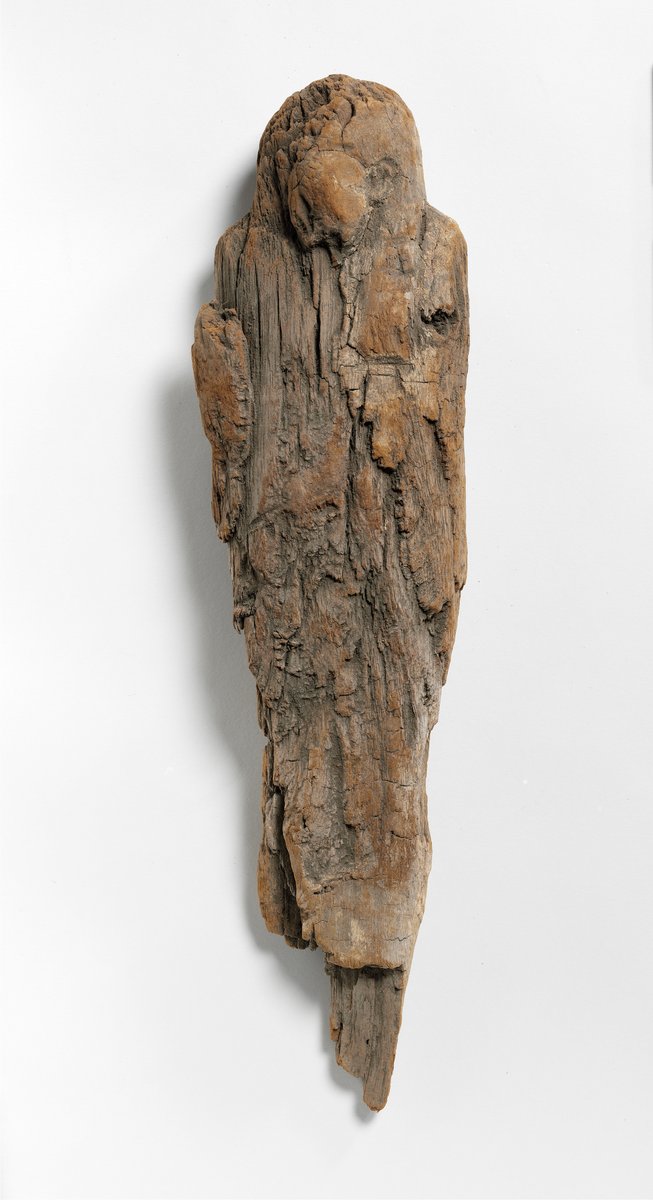
Ptah-Sokar-Osiris figure
Egyptian Art
| Place of production | Thebes, Deir el-Medina, Egypt |
|---|---|
| Date | 1186–1069 B.C. |
| Object type | stela |
| Medium, technique | limestone, paint |
| Dimensions | 32 x 25.7 x 7.8 cm |
| Inventory number | 51.232 |
| Collection | Egyptian Art |
| On view | Museum of Fine Arts, Basement Floor, Ancient Egypt, Daily life |
The top of the stela is missing, and the surface and edges are damaged. The originally, possibly round-topped upper register once contained the representation of a solar bark with a sun disc which is confirmed by the preserved lower part of the scene. Below this, is the seated figure of the falcon-headed Re-Harakhty wearing a sun disc. In front of him is a woman who is raising her right arm in adoration while, in her left hand, she is carrying a nemset-vase, a bowl used for making libations. On her head, she wears lotus flower and a cone of unguent. Above the two figures, six lines of hieroglyphic inscription are visible containing the name of the woman, Taweretherti whom the text is described as the “able spirit of Re”. Such stelae were popular during the Eighteenth–Twentieth Dynasties; most of them originate from Deir el-Medina, the New Kingdom settlement of craftsmen preparing the royal tombs. The expression “able spirit of Re” referred to dead family members who were thought to have belonged to the close vicinity of the sun god, Re. The living brought offerings and placed them in front of these stelae. In return, the dead relatives intervened in their daily lives by providing help for them.
Haeffner, Emil, “Une stèle en calcaire de la fin du Nouvel Empire/Mészkő-sztélé az Újbirodalom végéről”, Bulletin du Musée Hongrois des Beaux-Arts/Szépművészeti Múzeum Közleményei 4 (1954), p. 4-7, 68-71., fig. 1.
Demarée, Rob J., The 3ḫ Íḳr n Rc-Stelae: On Ancestor Worship in Ancient Egypt, Egyptologische uitgaven 3, Nederlands Instituut voor het Nabije Oosten, Leiden, 1983, p. 117-119.
This record is subject to revision due to ongoing research.